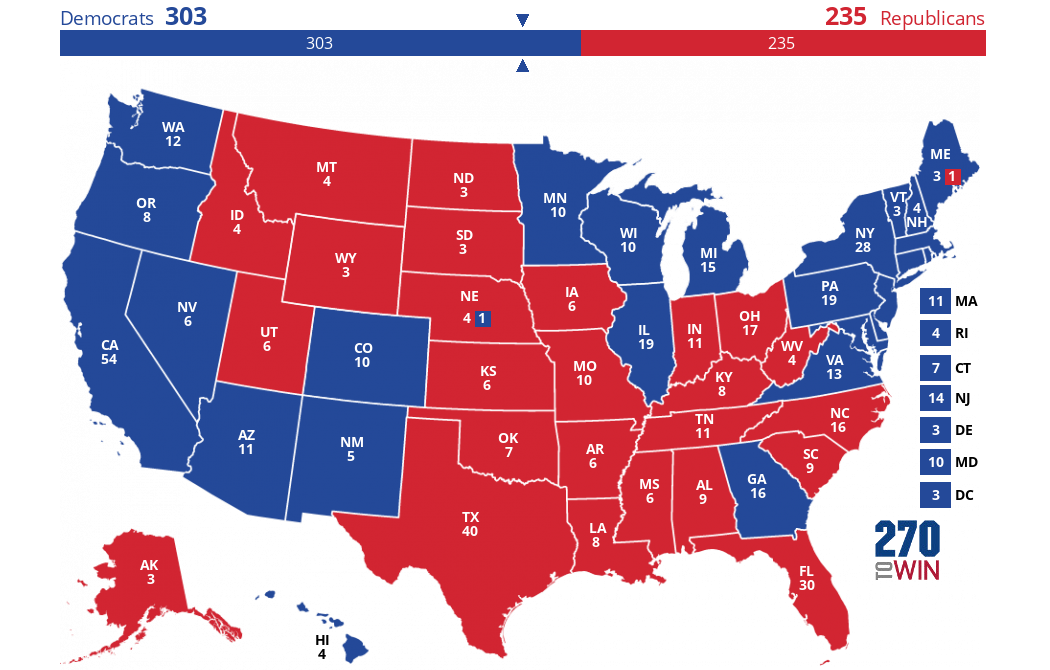Poll Methodology and Interpretation: Latest Presidential Polls

Presidential polls are a crucial part of the election process, offering insights into voter preferences and potential outcomes. However, understanding the methodologies behind these polls is essential to accurately interpreting their results.
Types of Polls
Different types of polls are used in presidential elections, each with its strengths and limitations.
- Telephone Polls: These polls are conducted by calling potential voters on landlines or mobile phones. They are a common and relatively inexpensive method. However, they can be subject to biases due to declining landline usage and difficulty reaching certain demographics.
- Online Polls: These polls are conducted through online surveys and can reach a large number of respondents quickly. However, they can be prone to biases due to self-selection, as people who choose to participate may not be representative of the general population.
- In-Person Interviews: These polls involve face-to-face interviews with potential voters, allowing for more detailed questioning and observation of non-verbal cues. However, they are more expensive and time-consuming than other methods.
- Push Polls: These polls are not designed to gather accurate information but rather to influence voters’ opinions by presenting biased or misleading information. They are considered unethical and should be disregarded.
Strengths and Limitations of Poll Methodology
Each poll methodology has its own strengths and limitations.
- Telephone Polls: Strengths include cost-effectiveness and ability to reach a wide audience. Limitations include declining landline usage, difficulty reaching certain demographics, and potential for interviewer bias.
- Online Polls: Strengths include speed and ability to reach a large audience. Limitations include self-selection bias, potential for manipulation, and difficulty ensuring respondent anonymity.
- In-Person Interviews: Strengths include detailed questioning, observation of non-verbal cues, and higher response rates. Limitations include high cost, time-consuming nature, and potential for interviewer bias.
Sampling Methods and Potential Biases, Latest presidential polls
Pollsters use various sampling methods to select respondents, but each method can introduce potential biases.
- Random Sampling: This method aims to select respondents randomly, ensuring that each member of the population has an equal chance of being chosen. However, it can be difficult to achieve true randomness in practice.
- Stratified Sampling: This method divides the population into subgroups based on characteristics like age, race, or gender, and then randomly selects respondents from each subgroup. It helps ensure that the sample reflects the population’s demographics.
- Convenience Sampling: This method selects respondents based on their availability or ease of access. It is often used for quick and inexpensive polls but can introduce biases because the sample may not be representative of the population.
Margin of Error and Its Impact
The margin of error is a statistical measure that indicates the range within which the true population value is likely to fall.
The margin of error is typically expressed as a percentage, such as ±3%.
A larger margin of error suggests greater uncertainty in the poll results.
Interpreting Poll Data
Interpreting poll data requires understanding the methodology used, the margin of error, and potential biases.
- Consider the Poll Methodology: Identify the type of poll used, the sampling method employed, and the potential biases associated with the methodology.
- Evaluate the Margin of Error: Understand the margin of error and its impact on the poll results. A larger margin of error indicates greater uncertainty.
- Analyze Potential Biases: Consider any potential biases that may have influenced the results, such as self-selection bias, interviewer bias, or sampling bias.
- Compare Results Across Polls: Compare results across multiple polls to identify trends and consistency.
The latest presidential polls are all over the place, innit? It’s like everyone’s got a different opinion on who’s gonna win. But, you know, if you wanna see how politicians try to spin things, you gotta check out Trump’s news conferences.
They’re a whole different level of chaos, man. Anyway, I reckon the polls will keep changing right up until the election, so who knows what’s gonna happen.
The latest presidential polls are all over the shop, innit? It’s like everyone’s got their own opinion on who’s gonna win. I reckon it’s all gonna come down to who can spin the best narrative, like Stephanie Grisham, who’s been dishing the dirt on the White House in her new book, stephanie grisham.
She’s definitely got some juicy stories to tell, and it’ll be interesting to see how it all plays out in the polls.
